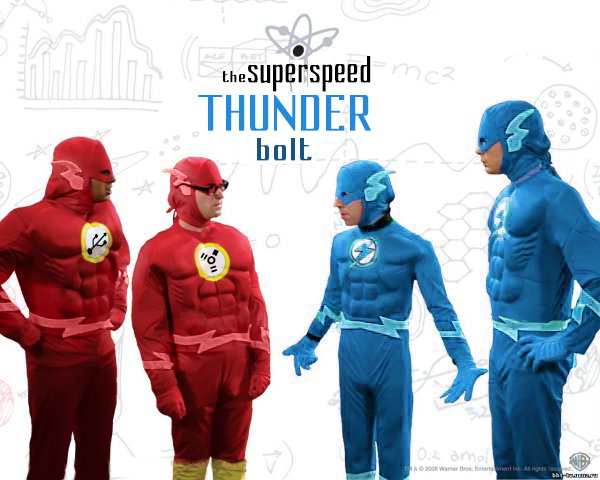Thunderbolt: lightning-fast interface

Hello. Not so long ago, Intel developed a new interface to
based standards DisplayPort and PCI-Express. It is called Thunderbolt, and about him many
already heard. Until this summer, this connector, and all the peripherals remained
a unique “trick” of devices of one patent troll, although not everyone understood, in
than the fundamental difference from the available technologies, and the creators were accused of introducing
another low-incompatible proprietary garbage. From now on it is not. ASUS back in
May received a certificate from Intel (by the way, the first in the world) to manufacture
PC motherboards with Thunderbolt on board. The name of the new models - P8Z77-V
Premium and P8Z77-V Pro , both equipped with all possible modern
interfaces, including the now-no-unique connector, completely
compatible with miniDP.
What are the advantages of this interface, and why you should not call
his “proprietary bullshit”? If you look at the description of TB on the Intel site,
it will become clear that the Thunderbolt itself is a “hybrid” of the popular
DisplayPort’s professional connectivity environment (and uses fully
A compatible connector with which you can simply turn on the monitor,
using a DP-MiniDP cable) and a controller that “communicates” with the PCI bus
Express X4, and is responsible for connecting the rest of the periphery to this
high speed interface. As a bonus, all models of Intel processors,
containing a built-in graphics accelerator, also gain access to
the controller and can display the image directly through Thunderbolt / DP to the monitor.
')
What are the main differences of the new interface from USB, FireWire and eSATA / SATA?
1. Data transfer rate.
Each Thunderbolt connector contains two channels with bandwidth in
10 Gbit / s each. Moreover, this bandwidth is achieved in full
duplex - that is, in both directions at the same time. For comparison: USB 2.0 (perhaps
The most popular type of peripheral connection at the moment
give out 480 Mbps. Slightly more productive is
highly specialized and uncommon FireWire 800 - up to 800 Mbit,
and the actual throughput is slightly closer to the maximum than
at USB. The Express-Card, quite popular at the time in laptops, has
Maximum bandwidth of 2.5 Gbps. Gaining momentum and
even gradually penetrating even the low-end USB 3.0 can
boast a “modest” 5 Gbps. I remind you that Thunderbolt has two channels of 10 Gbit /
with. A tangible lead from the closest competitor, isn't it?
2. Connect directly to PCI-Express X4.
Considering that motherboards will be released with support for PCI-Express 3.0,
it is not difficult to calculate (or look at the wiki, aha) that the bandwidth of such
interface - 64 Gb / s in duplex. That is much more than the maximum
cable bandwidth, and therefore will not become a “bottleneck” in
data transfer. And when you consider the fact that Intel has promised for ten years will increase
data transfer rate over Thunderbolt is ten times - then there is just PCI-E 4.0
will keep up (and even the fifth), with the next doubling (quadruple) throughput
abilities. There should be no problems like USB!
3. Up to seven devices per port.
Yes, of course, USB also has hubs / hubs, and theoretically “plugging in”
can be more. But he has one big problem - a very big “overhead”
data transfer costs. Work with two disks or flash drives
simultaneously through one port - it means to work twice as slowly as at least. But
This “rule” does not apply to Thunderbolt! If you connect large
FullHD or even WQXGA resolution monitor, camcorder, hard drive (and more
better - a couple), network adapter and something else - everything will work almost
without loss. The reason for such flexible extensibility is truly huge throughput.
capacity and minimal “extra” transmitted data. Thanks to the “grandpa” PCI-
Express for a good architecture;)
4. Meals without additional costs.
Copper Thunderbolt variants (yes, optics has been available since 2012, Intel has been working on
introduction of copper conductors for the transmission of power to optical cables) allow
transmit up to 10 watts so that many peripherals can
do without external power. This, of course, is not yet compared with twenty
thirty watts in the case of Power Over Ethernet, but here and the goals are slightly different, yes
and “consumers” are different.
5. Flexibility.
Thunderbolt allows you to connect not only an external drive, camera, monitor, RAID
array or docking station for a laptop. Network adapter, USB devices and FireWire-
devices, monitors with any (!) connector - adapters are already released and already
are sold. And if you have a Thunderbolt in your computer (or laptop), but you
lacking something else (for example, only 2 USB ports) - just look at the adapter market. Most likely, what you want to connect, you can connect
via Thunderbolt.
In general, Good news, everyone! This summer, thanks to ASUS, it became available to us.
new peripherals and new features. Hope high speed connection
Thunderbolt will gain momentum and be able to press all sorts of eSATA, USB and others
IEEE 1394. New, fast, with a rich reserve for the future - what else is needed for
happiness

PS Picture in the topic - fotozhaba on the poster of the series "The Big Bang Theory." The similarity of their zippers (they are all in the costumes of the comic book hero Flash), placed on the chest with the official Thunderbolt logo is absolutely random :)
Source: https://habr.com/ru/post/149119/
All Articles